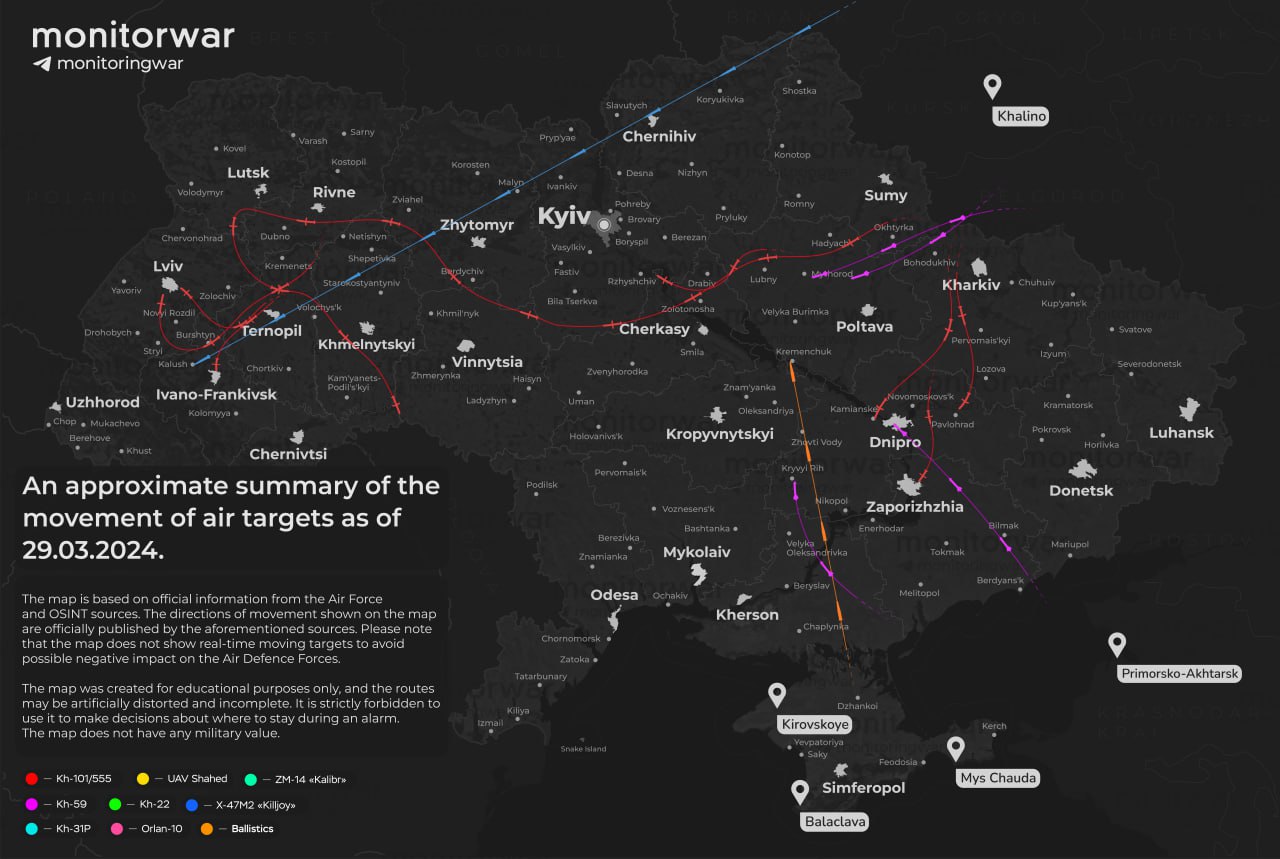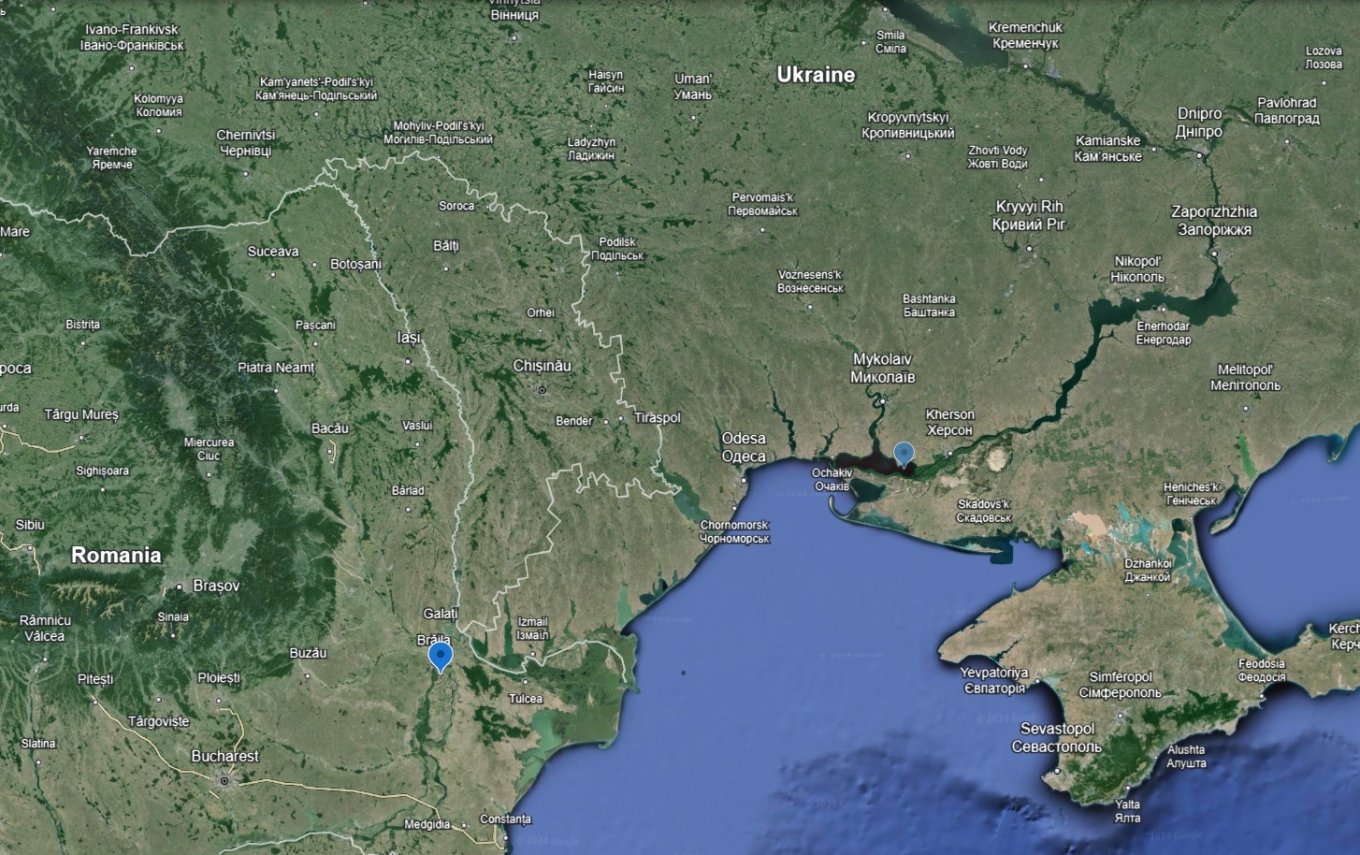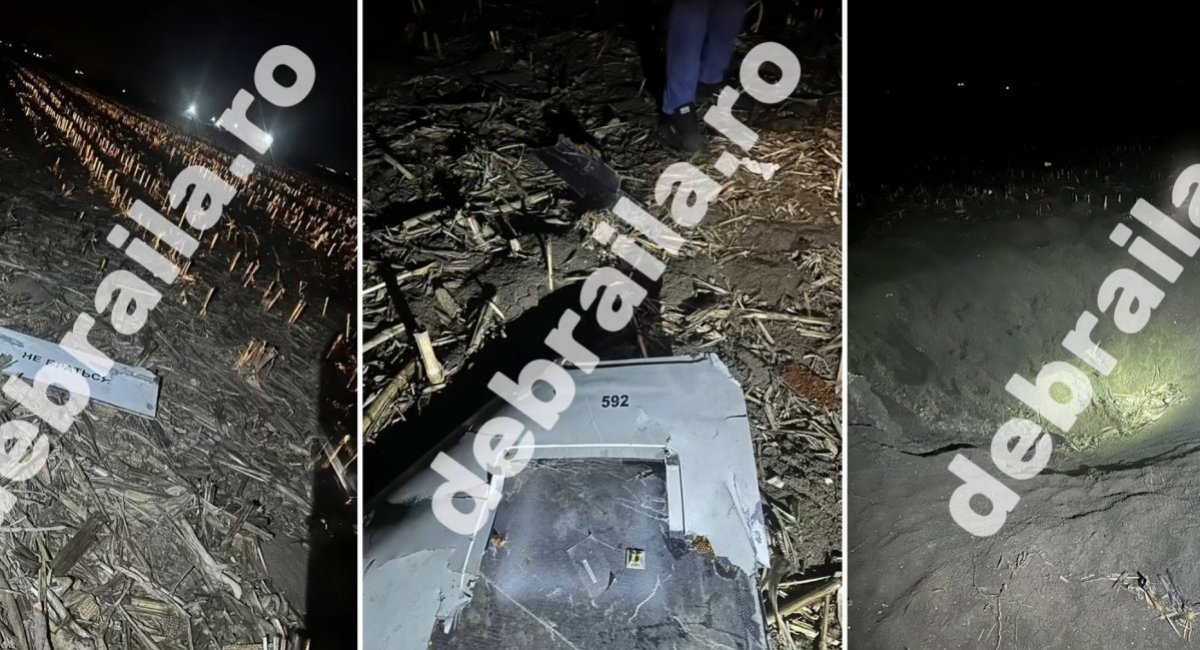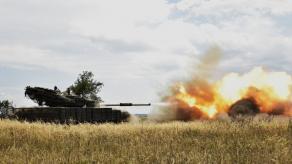Another big wave of russian attack drones was targeting Ukraine on the late evening of March 28th when one of the Shahed-type loitering munitions entered Romanian airspace en route, fell and exploded without reaching Ukrainian territory. As recorded, it flew at least 27 km into Romania until it detonated in a field near the city of Brăila. Although, most likely, it covered about 100 km but we'll discuss that later.
The incident took place between around 20:00 and 22:00, reports vary across Romanian media. Local authorities were informed about the drone at 21:45. As the aerial vehicle fell and exploded, it created a crater about 4 meters in diameter. The type of the drone is Shahed-136 as evident from the footage filmed on the site.
Read more: NATO Builds the Biggest European Base in Romania That Will Surpass Germany’s Ramstein Base
Just a few hours earlier, the Ukrainian Air Force was observing Shahed-type drones moving from the southern regions of Ukraine headed northwest and over the central regions heading southwest but none were seen moving towards Odesa, a major Ukrainian city closest to Romania. Unofficial data, like observations from OSINT research groups, have not seen moving toward Odesa or any of the cities even remotely close to the explosion site.

Thus, the russian Shahed was apparently purposefully directed towards Romania, and it matters little if the final destination was in Ukraine or not. That brings us to an assumption that the drone could have covered a much greater distance over Romania than just "dipped" 30 km into the NATO airspace.

This makes a stark contrast with the events of September 2023, when a Shahed-136 fell on the territory of Romania, in immediate proximity to the border because at that time the russians were aiming at Ukraine's port infrastructure on the Danube. The conclusion Bucharest had drawn back then was, they should build ersatz shelters for the local citizens.
In all cases that happened in 2023, the russian federation was really targeting objects in the Odesa region, as shown by the trajectories of weapons launched through Romania and crash sites being actually nearby critical Ukrainian facilities, unlike this recent provocation on the night of March 28–29, 2024.
Worth noting, that this time the Ministry of Defense of Romania did not "categorically deny" any drones falling on its territory, as was the case in September during the first similar episodes, but reported the falling of an "unidentified drone" and began an investigation in accordance with "specific operational procedures." Apparently, the ones we can see in the video filmed near the drone crash location the following morning:
On a note from Defense Express, Romanian authorities are not the only ones to draw conclusions from the drone attacks. Seeing such public response from Bucharest after a long-range suicide drone has already exploded a mere 5 km from Brăila, a city populated by 200,000 residents, Moscow is taking notes of its own and taking advantage of the situation.
By laying the routes for its attack drones through Ukraine's allied neighbor country, russian forces undermine the efforts of Ukrainian air defense and make them split anti-aircraft equipment across a wider territory to make up for the incapability of Romania to take down threats traveling through its airspace.
Read more: Romanian Pilots on Their Transition From Soviet MiG 21 to F-16














